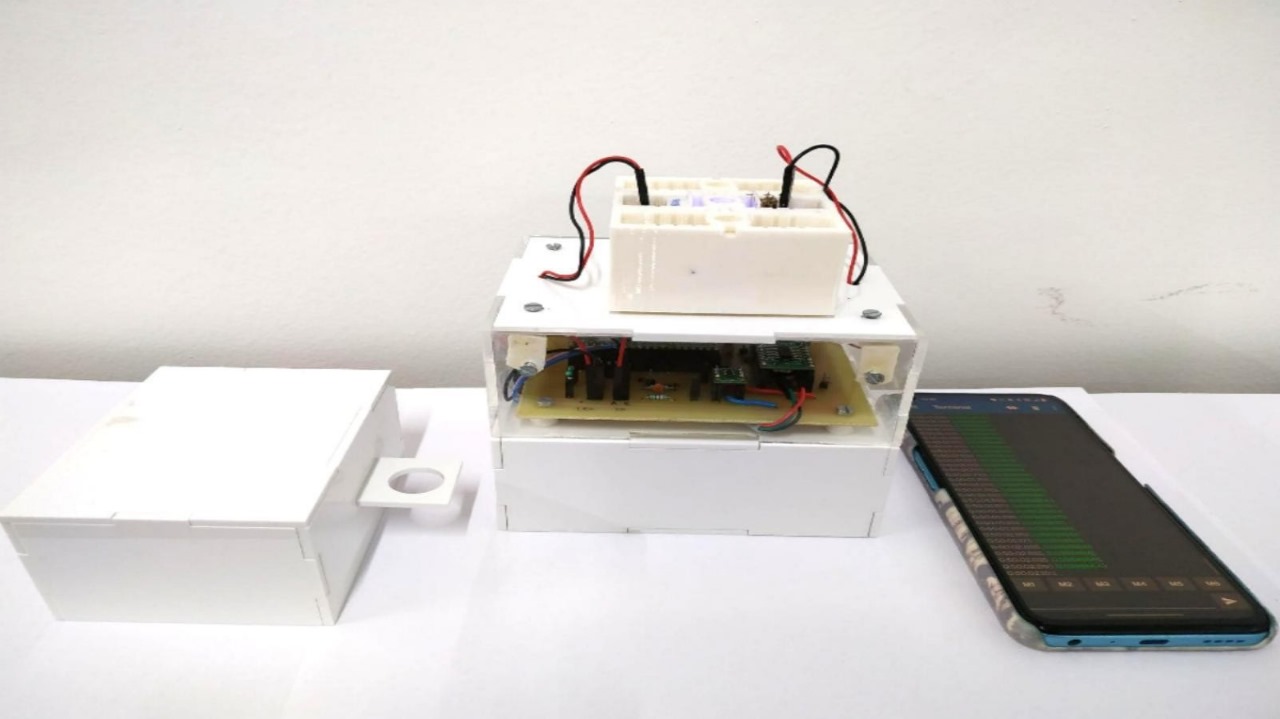Mumbai, Oct 19 (IANS) Scientists from the Indian Institute of Technology Bombay (IIT Bombay) have developed a low cost, portable device designed to detect DNA in wastewater and other water bodies to aid in the early detection of viral and bacterial pathogens.
The sensor is highly sensitive to any DNA present in a sample and was shown to be able to detect the presence of pathogens, such as E. coli bacteria and bacteriophage phi6 virus, in sewage and water bodies.
It functions by detecting colour changes in samples created by the interaction of DNA with methylene blue (MB) dye.
Intercalation is the process by which molecules, such as methylene blue, insert themselves in between bases of DNA. This causes a change in the property of the material to absorb light of different wavelengths, thereby causing a change in its colour.
In a sample prepared for testing, this leads to a change in the colour of the sample. The colourimetric sensor system is designed around an indigenously built circuit, called a phase-sensitive detection circuit, which detects this change in colour. The sensor consists of a sample holder connected to the colourimetric sensor.
Once a sample is placed in the sample holder, the sensor picks up any colour change in the sample due to DNA, which is then converted to a voltage signal for measurement and recording.
The team has also developed a mobile application that can read this voltage signal via bluetooth and display the information on a smartphone.
The phase-sensitive detection circuit, which was completely designed and built at IIT Bombay, is constructed from low-cost semiconductor integrated circuit components and a low-power LED light source. Methylene blue is a widely used dye — easy to obtain and inexpensive. These factors have allowed the researchers to keep the cost of manufacturing and operating the sensor low.
“The technology developed in our work holds promise for the realisation of a truly cost-effective solution for wastewater-based epidemiology,” said Prof. Siddharth Tallur, from the Department of Electrical Engineering, IIT Bombay.
The sensor is, however, not without its limitations. The use of methylene blue dye means reduced specificity of the device.
According to Prof. Tallur “It (methylene blue) will bind with any DNA present in the sample to which it is added, and therefore the overall specificity of the sensor is determined by purity and choice of the primers used for target amplification in PCR (chemicals added to target DNA of a specific pathogen).”
The research team envisions that with advancements like other dyes with higher specificity, target-specific probes and robust microfluidic chips, the system can be enhanced for improved sensitivity, specificity, and robustness.

